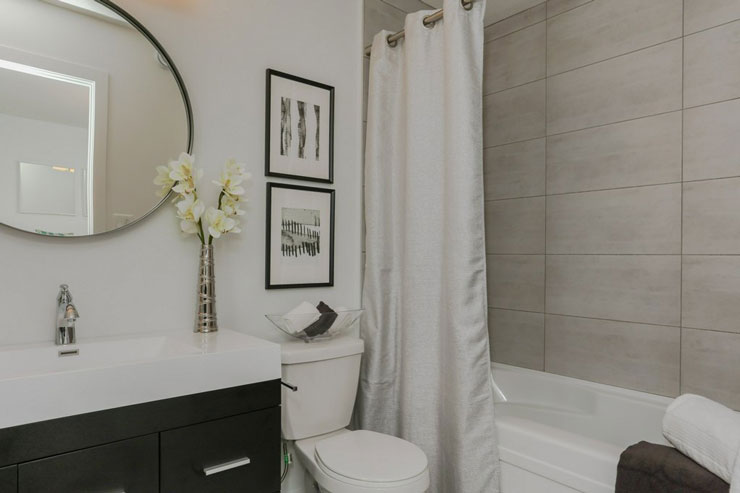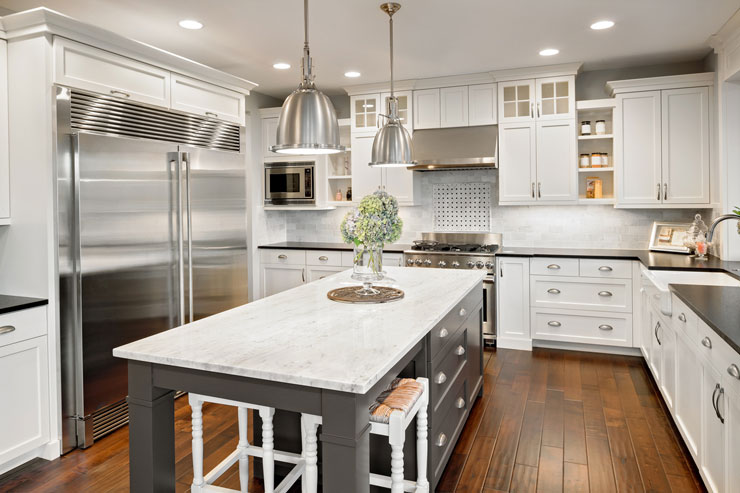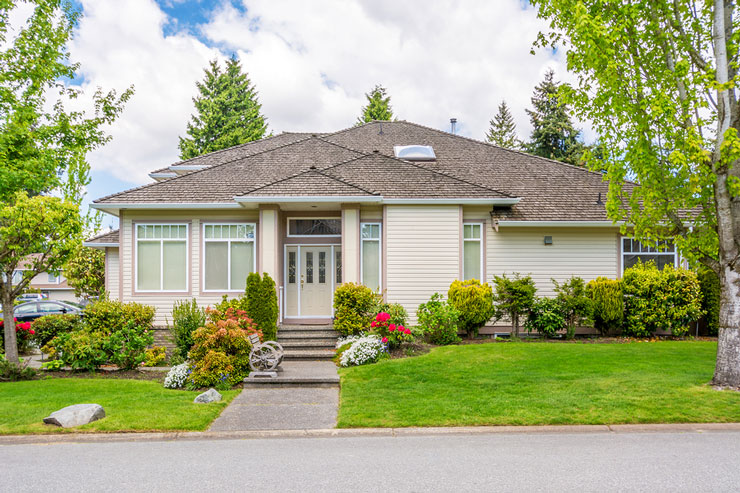
Estimating Edmonton renovation costs before you buy.
By Camillo Esposito, Owner of Independent Bath & Renovations: https://www.independentbath.com/ You found a house or a condo in a mature neighbourhood you love but it needs some attention for you to call it home. Established neighbourhoods provide mature trees and landscaping, shopping, a central location and a ton of convenience many people are drawn to. The trade-off is updates and repairs are sometimes required for homes in older neighbourhoods. The challenge becomes, how can remodelling costs be calculated to ensure the combined totals of your mortgage and improvements do not exceed your budget? Ballparking renovations can be a minefield for established contractors as the scope of work is unique to each project. If we ballpark too high, we can lose the opportunity to build a contract-ready quote down the road. If we ballpark too low, the budget is of no use to anyone. Experienced operators want to properly assess the site and have a solid customer wish list in hand. In this way we can do the right homework and build a proper quote rather than a ballparked one. Simply put, accurate quoting requires good information and time. But regardless of the challenges of ballparked quotes, we recognize budgets for a used home buyer are critical. Rest assured; with a little effort it is possible for you to put budgets together. Renovating a whole house or condo in Edmonton can range from $50 per square foot for partials and smaller homes to $200 per square foot and up. Below are some of the factors that affect renovation costs.Budgeting for Bathroom Renovations
 In smaller 3-piece bathrooms (5 feet by 8 feet for example) the starting range for complete mid grade renovations will fall between $15,000 and $25,000. This is where the floor plan is unchanged, and a complete renovation is required.
Of this total, about half of the room’s budget will come from the tub or shower area so if that area is left undisturbed, significant savings can be realized. In fact, partial renovations overall can save a lot of money compared with complete renovations. Leaving a tub, shower or cabinet in place for example and just upgrading paint, flooring, countertops and fixtures will come in much lower than re-doing the entire room. Be strategic with your needs.
In larger 4-piece bathrooms that include both a shower and a bathtub, you can expect to add at least another $10,000 to $15,000 to the budget. Since bathrooms take on many shapes and sizes and customer needs vary, here are some considerations that can take the budget north of the above numbers: larger rooms, luxury features like steam showers, sound systems & heated floors, changing the layout, specialty faucets and finishes, adding a window or skylight, tiling all of the walls in the room floor to ceiling, upgrading countertops to luxury materials… you get the idea. More work and higher end material equals more total cost.
Since things can add up quickly, bringing your budget goals forward to a contractor early will allow them to have an open conversation so they can help steer the ship. You will always have opportunities to get an additional quote down the road. Holding your cards too close to your chest early in the discussion may not get you the information you need quickly.
In smaller 3-piece bathrooms (5 feet by 8 feet for example) the starting range for complete mid grade renovations will fall between $15,000 and $25,000. This is where the floor plan is unchanged, and a complete renovation is required.
Of this total, about half of the room’s budget will come from the tub or shower area so if that area is left undisturbed, significant savings can be realized. In fact, partial renovations overall can save a lot of money compared with complete renovations. Leaving a tub, shower or cabinet in place for example and just upgrading paint, flooring, countertops and fixtures will come in much lower than re-doing the entire room. Be strategic with your needs.
In larger 4-piece bathrooms that include both a shower and a bathtub, you can expect to add at least another $10,000 to $15,000 to the budget. Since bathrooms take on many shapes and sizes and customer needs vary, here are some considerations that can take the budget north of the above numbers: larger rooms, luxury features like steam showers, sound systems & heated floors, changing the layout, specialty faucets and finishes, adding a window or skylight, tiling all of the walls in the room floor to ceiling, upgrading countertops to luxury materials… you get the idea. More work and higher end material equals more total cost.
Since things can add up quickly, bringing your budget goals forward to a contractor early will allow them to have an open conversation so they can help steer the ship. You will always have opportunities to get an additional quote down the road. Holding your cards too close to your chest early in the discussion may not get you the information you need quickly.
Budgeting for Kitchen Renovations
 Kitchens are harder to ballpark as they are larger rooms with more variables. Because of this a consultation with a contractor will be useful if the kitchen needs to be addressed. The same principles as before come into play: larger rooms require higher budgets than smaller rooms, partials are less expensive than complete redos and the materials and fixtures chosen play a huge role in terms of cost. As an example of material cost affecting a kitchen reno, countertops alone can cause the budget to fluctuate by thousands of dollars from one material to the next. Examine your wish list thoroughly to determine your wants versus your needs.
For these reasons, we have seen smaller kitchens come in ranging from $50,000 - $80,000 and up using an existing floor plan, and larger heritage home kitchens coming in from $150,000 and up. This is where a basic layout and your wish list will facilitate a more realistic discussion about appropriate kitchen budgets. With kitchens (and any room for that matter) if you are happy with the floorplan and layout it will be significantly less expensive to renovate than when walls and mechanical systems require moving and/or new beams and supports come into play.
Kitchens are harder to ballpark as they are larger rooms with more variables. Because of this a consultation with a contractor will be useful if the kitchen needs to be addressed. The same principles as before come into play: larger rooms require higher budgets than smaller rooms, partials are less expensive than complete redos and the materials and fixtures chosen play a huge role in terms of cost. As an example of material cost affecting a kitchen reno, countertops alone can cause the budget to fluctuate by thousands of dollars from one material to the next. Examine your wish list thoroughly to determine your wants versus your needs.
For these reasons, we have seen smaller kitchens come in ranging from $50,000 - $80,000 and up using an existing floor plan, and larger heritage home kitchens coming in from $150,000 and up. This is where a basic layout and your wish list will facilitate a more realistic discussion about appropriate kitchen budgets. With kitchens (and any room for that matter) if you are happy with the floorplan and layout it will be significantly less expensive to renovate than when walls and mechanical systems require moving and/or new beams and supports come into play.
Budgeting for other Living Areas
Bedrooms and other living areas are usually less costly to update as they often require only flooring, paint and light fixtures to bring them back up to date. These budgets are comparatively easy to estimate by square footage once you have picked the type of flooring you prefer. Flooring materials vary in cost significantly as well. We encourage customers to focus on premium brands backed with the best warranties to ensure the floor will continue to look great for many years. The type of flooring you choose will also affect your budget in terms of floor prep and installation labour. As an example, vinyl tile and vinyl plank flooring price out less installed than ceramic or porcelain tiles yet the better brands of vinyl are very durable and even warmer on bare feet than traditional tile. This is an example of how spending less money does not always mean poorer quality or less benefit. A professional who has a mind towards your investment can help you determine whether a savings is worthwhile or more money is required to achieve the best value. For carpet, nylon versus polyester is worth the upgrade as is better underlay. Premium hardwoods tend to be both better looking and have tougher finishes compared to economy options. Since floors are a working surface in your home, trying to save pennies can come back to haunt you quickly. Overall it is best to look at a floor as an investment as opposed to fashion consideration. Finally, unless you intend to take on the flooring removal, disposal and trim work (baseboards), there are additional costs to changing up the floors that need to be factored in to get to a proper flooring budget.Updating Home Exteriors and Landscaping
 Fortunately, exterior costs are compartmentalized, and estimates can be arranged without the contractor entering the house. Some estimators will even make use of Google satellite maps to provide ballpark numbers without having to go to the site. And as with all renovations, material choices are a big budget factor.
Research and choose products for their lasting value as opposed to fashion trends. And select your tradespeople or contractor based on their history and reputation rather than on price point alone. If a quote sounds low, a wave of negative feedback usually follows that operator – check online reviews and the Better Business Bureau. If a contractor has no feedback, reviews or references, move on to another service provider.
Fortunately, exterior costs are compartmentalized, and estimates can be arranged without the contractor entering the house. Some estimators will even make use of Google satellite maps to provide ballpark numbers without having to go to the site. And as with all renovations, material choices are a big budget factor.
Research and choose products for their lasting value as opposed to fashion trends. And select your tradespeople or contractor based on their history and reputation rather than on price point alone. If a quote sounds low, a wave of negative feedback usually follows that operator – check online reviews and the Better Business Bureau. If a contractor has no feedback, reviews or references, move on to another service provider.
Final Budget Considerations
Whenever numbers are received from contractors, second opinions are useful as preliminary budgets may be incomplete, or worse - low balled to grab a potential customer’s attention. Don’t fall victim to wishful thinking. Pick the higher numbers to keep your budget realistic. And when the numbers begin to take shape, it’s best to plan for unforeseen expenses and contingencies. Adding an additional 10 or 20 per cent to your overall estimated costs would not be unreasonable here. There is truth to the adage it will always cost more than you planned. Renovations and home improvements are basically about time and material. As a rule of thumb, where mid-grade materials are installed by qualified tradespeople, about half your budget will go towards product and the other half towards labour. This ratio has held true for decades and its amazing how it still holds true today. How does this ratio apply to home buyers considering a used home? If you really love the property but you are concerned an acceptable offer plus the costs to renovate will exceed your budget, there are still two common strategies taken if you still want to proceed:- Stage the work to be done over time.
- Invest the time required to research and do some of the labour yourself.

Leave A Comment